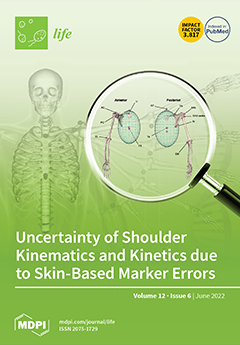This study was conducted to investigate the effect of the
Ficus sycomorus extract on
Eimeria intestinalis in experimentally infected rabbits. For this purpose, forty male 30-day-old rabbits (
Blanc de Bouscat) were divided into four groups (
n = 10 in each
[...] Read more.
This study was conducted to investigate the effect of the
Ficus sycomorus extract on
Eimeria intestinalis in experimentally infected rabbits. For this purpose, forty male 30-day-old rabbits (
Blanc de Bouscat) were divided into four groups (
n = 10 in each group). Rabbits kept in the first group served as negative control (non-treated-non-infected). Rabbits kept in the second, third, and fourth groups were challenged at 10 weeks old with 3 × 10
4E. intestinalis sporulated oocysts. The third and fourth groups were treated orally with diclazuril 10% (0.05 mg/kg body weight) and
F. sycomorus (100 mg/Kg) for three consecutive days, respectively. The efficacy was assessed based on the growth performance parameters, clinical symptoms, oocyst shedding, histopathological findings, and hematological parameters for 16 days post challenge. The study revealed that rabbits treated with
F. sycomorus methanolic extract and diclazuril showed mild clinical symptoms with a significant decrease in oocyst shedding compared with the positive control. Moreover, the diclazuril-treated group showed the highest leukocytic count and the lowest monocytes percentage compared with other groups. Furthermore, the lowest lymphocytes percentage was recorded in the control positive group. Histopathologically, moderate coccidia infestation in the intestinal mucosa and moderate hydropic degeneration of hepatocytes were observed in the diclazuril treated group compared with the negative control. However, mild coccidia infestation in the intestinal mucosa and slight coagulative necrosis of hepatocytes was found in the
F. sycomorus treated group. In conclusion,
F. sycomorus methanolic extract had promising effects on the live performance, oocyst count, and blood variables, while it possesses adverse consequences on the hepatic tissues. Further studies are required to optimize the dose and extraction method to mitigate its side effects.
Full article






